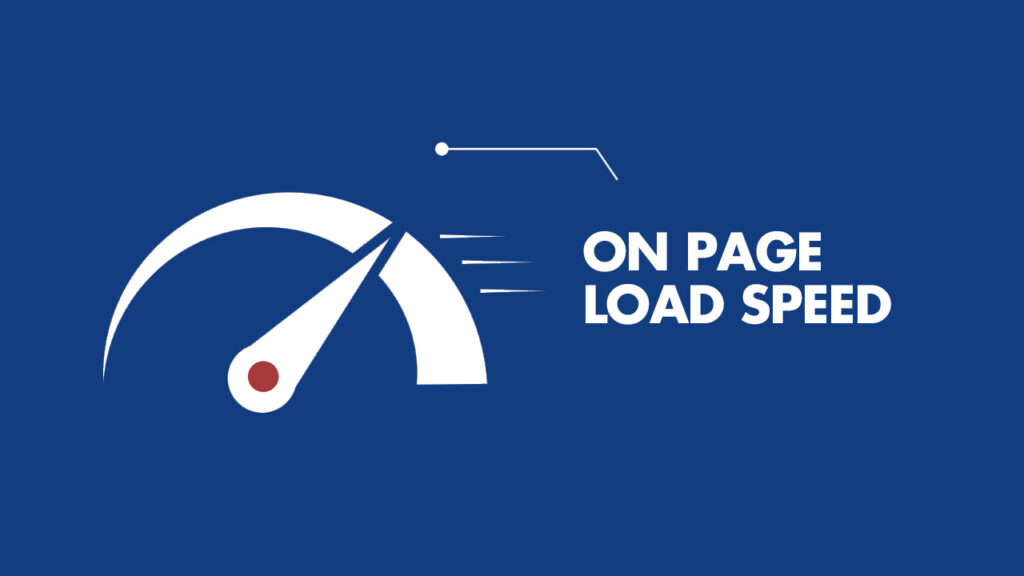On the subject of optimizing web site efficiency, the time period “caching” is incessantly talked about. “Caching will enhance your web site pace!” and “Caching is essential to your web site’s efficiency!” are frequent phrases, however what does caching entail? Why is it so essential for the efficiency of your web site, particularly when you’re working with WordPress? This complete information will delve into every part you’ll want to learn about caching, together with its sorts, mechanisms, and finest practices to successfully leverage it on your WordPress web site.
What Is Caching and Why Is It Vital?
In easy phrases, caching refers back to the technique of storing copies of recordsdata or information briefly to hurry up entry to them. For web sites, caching entails saving the weather of an internet web page—reminiscent of HTML, CSS, JavaScript, and pictures—in order that they are often loaded extra shortly the subsequent time a person visits the location. By lowering the time it takes to retrieve and show content material, caching improves the general pace and efficiency of a web site.
Caching for Web sites
When a person visits a web site, their browser must fetch varied assets like HTML recordsdata, stylesheets, and pictures from the server. With out caching, this implies each go to requires a brand new round-trip request to the server, which might decelerate load occasions considerably. Caching addresses this difficulty by storing these assets both on the person’s system (browser-side caching) or on the server (server-side caching), thereby lowering the necessity to repeatedly fetch them.
Advantages of Caching
- Improved Load Occasions: By storing static assets, caching considerably quickens web page load occasions, enhancing person expertise and satisfaction.
- Lowered Server Load: Caching minimizes the quantity of labor the server must carry out for every request, which could be particularly helpful throughout excessive visitors durations.
- Enhanced Efficiency: Quicker web page masses result in higher search engine marketing rankings and better conversion charges, as customers usually tend to keep on a web site that masses shortly.
Sorts of Caching
Understanding the 2 main sorts of caching—browser-side and server-side—is crucial for optimizing your WordPress web site’s efficiency.
1. Browser-Aspect Caching
Browser-side caching happens when a person’s browser shops copies of assets out of your web site. Which means that when a person revisits your web site, their browser can load these assets from its native cache slightly than making a brand new request to the server.
How It Works
When a person first masses a web page, their browser sends an HTTP request to the server. The server responds with the requested recordsdata and consists of caching directives within the HTTP headers. These directives instruct the browser on how lengthy it ought to retailer these recordsdata in its cache.
Key HTTP Headers for Browser Caching
- Cache-Management: This header defines caching insurance policies reminiscent of
public,non-public,no-cache, andmax-age. - Expires: Specifies the date and time after which the cached content material ought to be thought of stale.
- ETag / If-None-Match: Entity tags are used for cache validation, permitting the browser to test if the content material has modified.
- Final-Modified / If-Modified-Since: These headers assist decide if the content material has been up to date because it was final cached.
Advantages
- Quicker Load Occasions: Customers expertise faster web page masses as assets are retrieved from their native cache.
- Lowered Bandwidth Utilization: Caching helps save bandwidth by minimizing the quantity of knowledge transferred between the server and the browser.
2. Server-Aspect Caching
Server-side caching entails storing a generated model of an internet web page or its parts on the server. Which means that slightly than producing the web page from scratch each time a request is made, the server can shortly serve the cached model.
How It Works
When a person requests a web page, the server checks if a cached model exists. If it does, the server serves the cached web page straight. If not, the server generates the web page, caches it, after which serves it to the person.
Sorts of Server-Aspect Caching
- Web page Caching: Shops the whole HTML of a web page in order that it may be served shortly to subsequent guests.
- Object Caching: Caches database question outcomes or different objects to cut back the necessity to repeatedly question the database.
- Opcode Caching: Caches the compiled PHP code to keep away from recompiling it on each request.
Advantages
- Lowered Server Load: By serving cached content material, the server handles fewer requests, lowering the load and enhancing efficiency.
- Quicker Web page Technology: Cached pages are delivered extra shortly than dynamically generated ones, resulting in quicker load occasions for customers.
How Caching Works in Observe
With out Caching
Right here’s a simplified sequence of occasions that happens when a person visits a WordPress web site with out caching:
- The person enters the URL of the web page they need to go to.
- The browser sends an HTTP request to the server.
- The server processes the request and palms it off to PHP.
- PHP queries the database for the required content material.
- The database returns the content material to PHP.
- PHP generates the HTML web page.
- The server sends the HTML web page to the browser.
- The browser renders the web page for the person.
With Caching
When caching is applied, the method is optimized:
- The person enters the URL of the web page.
- The browser checks its cache for the web page.
- If the web page is cached, it’s served straight from the cache.
- If not, the server generates the web page, caches it, and serves it to the browser.
How Server-Aspect Caching Enhances Efficiency
Server-side caching can dramatically scale back the time required to serve content material. As an alternative of executing PHP scripts and querying the database for each request, the server merely retrieves the pre-generated cached web page.
Instance
Think about a well-liked weblog with excessive visitors. With out caching, every web page request requires database queries and PHP processing. With caching, the server saves the output of those processes and serves the cached web page to customers, considerably dashing up response occasions.
Implementing Caching on Your WordPress Web site
1. Browser-Aspect Caching
To implement browser-side caching, you’ll want to configure caching headers correctly. This may be accomplished by:
- Modifying .htaccess File: For Apache servers, you may add caching directives to your
.htaccessfile. - Utilizing a Plugin: WordPress plugins like WP Tremendous Cache or W3 Complete Cache can deal with browser-side caching for you.
2. Server-Aspect Caching
For server-side caching, you will have a number of choices:
- Caching Plugins: Plugins like W3 Complete Cache or WP Rocket can handle server-side caching inside WordPress. These plugins are user-friendly and supply varied caching options, however will not be as quick as devoted options.
- HTTP Accelerators: Instruments like Varnish or Redis can present quicker server-side caching. Varnish sits exterior of WordPress and caches pages in reminiscence, providing near-instantaneous load occasions.
- Managed Internet hosting Options: They deal with server-side caching for you, utilizing Varnish for high-speed caching, and routinely handle cache flushes to make sure your content material stays present.
Selecting the Proper Resolution
- For Simplicity: Begin with a caching plugin. They’re simple to arrange and handle.
- For Efficiency: Contemplate HTTP accelerators when you want superior efficiency optimization.
- For Problem-Free Administration: Go for a managed internet hosting supplier that handles caching routinely.
Dealing with Dynamic Content material and Cache Invalidation
Dynamic Content material
For websites with incessantly altering content material, reminiscent of information websites or eCommerce platforms, caching should be managed rigorously to make sure customers at all times see the newest content material.
- Shorter Cache Lifetimes: Set shorter cache expiration occasions for dynamic content material to make sure updates are mirrored shortly.
- Guide Cache Flushing: Use caching plugins or server instruments to manually flush the cache when necessary updates are made.
Cache Invalidation
Cache invalidation is the method of clearing outdated or stale cache. That is important to make sure customers see the newest content material.
- Computerized Invalidation: Many caching options provide computerized cache invalidation primarily based on predefined guidelines or content material modifications.
- Guide Invalidation: In instances the place computerized invalidation isn’t adequate, you may manually clear the cache by your caching plugin or server interface.
Frequent Caching Points and Troubleshooting
1. Outdated Content material
Difficulty: Customers may see outdated content material if the cache isn’t refreshed correctly.
Resolution: Make sure that your caching settings are configured to invalidate or replace the cache recurrently. Manually clear the cache if vital.
2. Cache Conflicts
Difficulty: Conflicts can happen when completely different caching mechanisms intervene with one another.
Resolution: Evaluation and alter your caching setup to keep away from conflicts. Disable any overlapping caching options or plugins.
3. Efficiency Degradation
Difficulty: Generally, caching won’t yield the anticipated efficiency enhancements.
Resolution: Reevaluate your caching configuration and check completely different caching strategies or plugins to optimize efficiency.
Superior Caching Methods
1. Content material Supply Networks (CDNs)
CDNs distribute cached copies of your web site’s content material throughout a number of servers around the globe. This reduces load occasions by serving content material from the closest server to the person.
2. Object Caching
Object caching shops database question outcomes to keep away from repeated queries. Instruments like Redis or Memcached can be utilized for object caching.
3. Opcode Caching
Opcode caching shops compiled PHP code to enhance efficiency. Instruments like APCu or OPcache will help with this.
Conclusion
Caching is a vital part of net efficiency optimization, significantly for WordPress websites. By implementing efficient caching methods, you may considerably enhance your web site’s pace, scale back server load, and improve person expertise. Whether or not you select to make use of browser-side caching, server-side caching, or a mixture of each, understanding how caching works and how you can configure it correctly will show you how to obtain optimum efficiency on your WordPress web site.
For additional studying on enhancing your web site’s efficiency, think about exploring extra assets and instruments, together with efficiency audits and Content material Supply Networks (CDNs). With the appropriate caching setup, your WordPress web site is not going to solely carry out higher but additionally present a smoother expertise on your guests.
For extra info on optimizing WordPress websites, try our different assets, or contact our help crew for customized help.
Word: This expanded article supplies an in depth overview of caching, its sorts, and its sensible implementation for WordPress websites. It’s designed to assist readers perceive the significance of caching and how you can successfully apply it to optimize web site efficiency.



